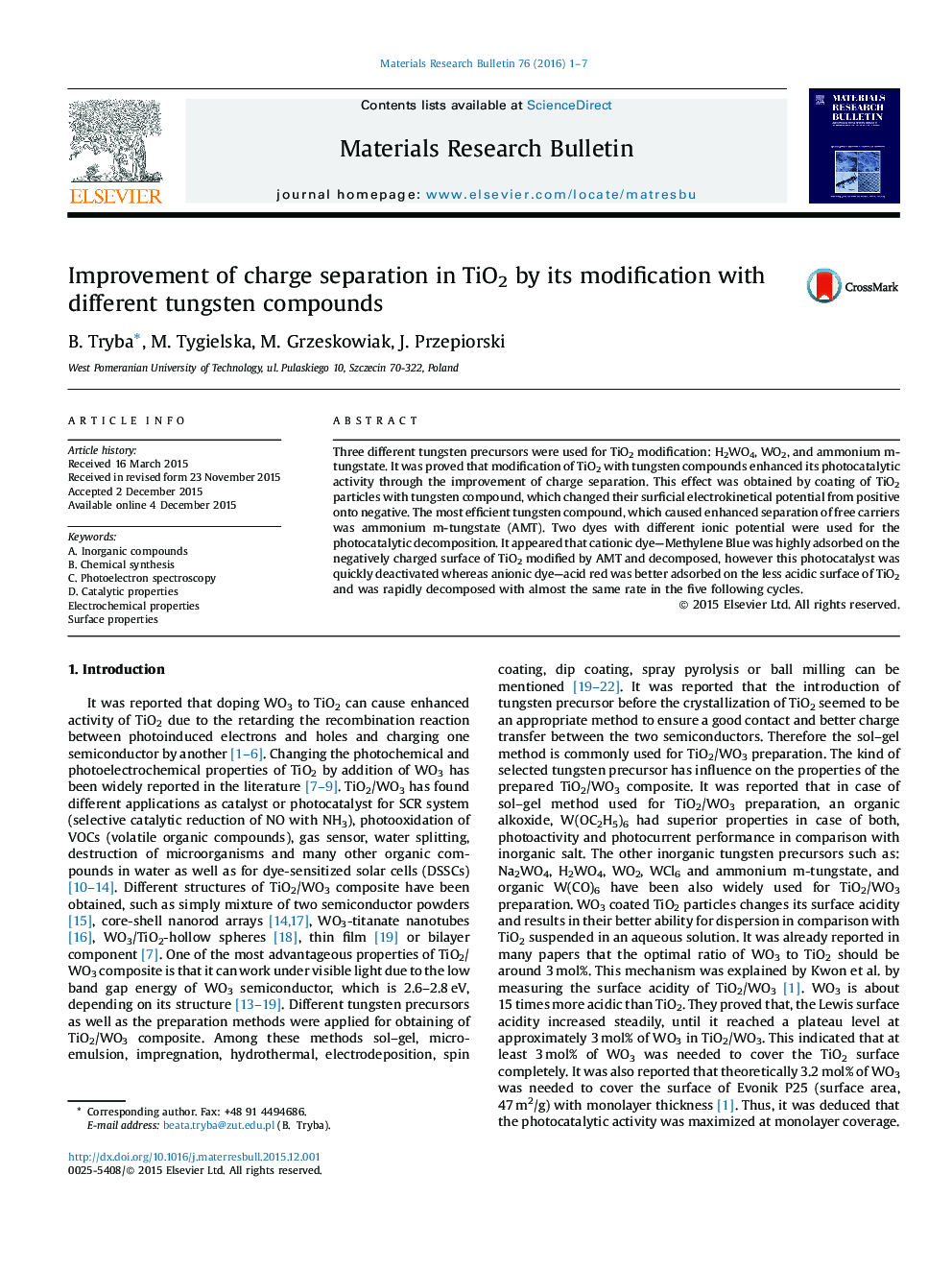| Article ID | Journal | Published Year | Pages | File Type |
|---|---|---|---|---|
| 1487355 | Materials Research Bulletin | 2016 | 7 Pages |
•Ammonium m-tungstate doped to TiO2 highly improved charge separation in TiO2.•Negative electrokinetic potential of TiO2 facilitates holes migration to its surface.•Fast migration of holes to TiO2 surfaces increased yield of OH radicals formation.•Adsorption of dyes on photocatalyst increased its decomposition under visible light.
Three different tungsten precursors were used for TiO2 modification: H2WO4, WO2, and ammonium m-tungstate. It was proved that modification of TiO2 with tungsten compounds enhanced its photocatalytic activity through the improvement of charge separation. This effect was obtained by coating of TiO2 particles with tungsten compound, which changed their surficial electrokinetical potential from positive onto negative. The most efficient tungsten compound, which caused enhanced separation of free carriers was ammonium m-tungstate (AMT). Two dyes with different ionic potential were used for the photocatalytic decomposition. It appeared that cationic dye—Methylene Blue was highly adsorbed on the negatively charged surface of TiO2 modified by AMT and decomposed, however this photocatalyst was quickly deactivated whereas anionic dye—acid red was better adsorbed on the less acidic surface of TiO2 and was rapidly decomposed with almost the same rate in the five following cycles.
Graphical abstractFigure optionsDownload full-size imageDownload as PowerPoint slide
